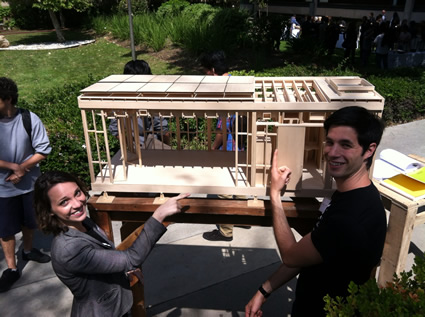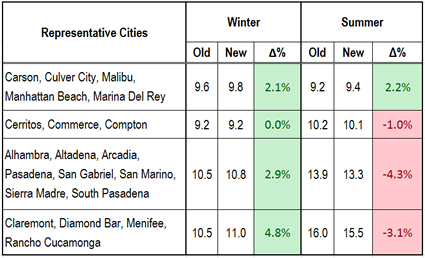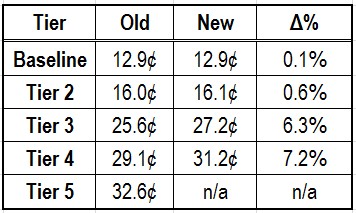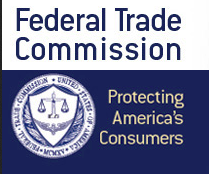Welcome to the
Run on Sun Monthly Newsletter

In this Issue: |
April, 2013
Volume: 4 Issue: 4
Unirac Supports USC Solar Decathlon Team with Assist from Run on Sun
It was great to meet such smart, enthusiastic, and talented young professionals dedicated to advancing sustainability, and it was the kind of encounter that made you want to roll up your sleeves and help them reach their goals. Well, now we are pleased to announce that our meeting has born fruit. Thanks to our friends at Unirac, we have some great news! Unirac has agreed to donate all of the racking gear needed for fluxHome™ - USC's entrant in the 2013 Solar Decathlon. And not just any racking, but Unirac's flagship product, SolarMount Evolution, which provides the most secure roof-top attachment system in the business. 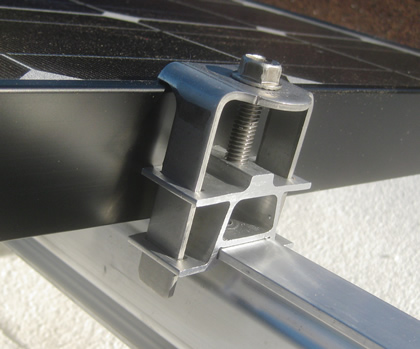
Soon, this hardware will support solar panels on USC's fluxHome™ We often write about how the solar industry is really supposed to be better than other endeavors - more focused on the future and not just profits in the present. After all, the systems that we install are supposed to last for 25 years and the reason we build them in the first place is to help create that sustainable future. So it is tremendously affirming to have a partner like Unirac that has a similar vision. (Nor is this donation an outlier for Unirac - read here about their efforts to assist with the installation of a solar power system on a home for children in Haiti.) We are proud to have played a small part in making this happen and prouder still to be associated with the USC Solar Decathlon Team and their efforts at providing lessons in sustainability for us all. Fight on! |
“Unirac has agreed to donate all of the racking gear needed for fluxHome™ - USC’s entrant in the 2013 Solar Decathlon.”
Help Us Spread the News!






SCE Rolls Out Major Rate ChangesIn November we wrote that SCE's rates were set to climb on average by more than 17% over the next three years. Now we are starting to see how those rates are about to change and the differences are indeed dramatic. In a 500+ page filing with the California Public Utilities Commission (CPUC), SCE documents major changes to both residential and commercial rate structures that will change how, and how much, SCE's customers will pay in the coming years. We will be breaking this filing down over time, but for a start, let's look at changes for residential customers. Changing the BaselineMost residential customers of SCE pay according to Rate Schedule D (for 'Domestic') that charges based on a tiered structure. At the bottom of the tier is the so-called baseline allocation - an amount of energy use per day allowed based on where the customer resides. As SCE explains it on their FAQ page:
Under SCE's new Domestic rate structure, baseline allocations will drop from their present 55% down to 53% of the average residential consumption. Since all other aspects of the rate structure are dependent on the baseline allocations, these seemingly small drops can have a significant impact on how much a residential customer ultimately pays. However, the baseline allocation reductions are an average over the entire customer base - some customers will see their allocation increase while others will see theirs go down. Here's a table showing old allocations versus new ones for customers in the Run on Sun service area: For the remainder of the year, one region will see their allocation go down, six will see it go up and three will remain unchanged. Is Anyone Shedding Tears Over Fewer Tiers?SCE's old residential rate structure had five tiers: baseline (or Tier 1), Tier 2 (usage of the next 30% beyond baseline), Tier 3 (usage between 131 and 200% of baseline), Tier 4 (usage between 201 and 300% of baseline) and Tier 5 (all usage beyond 300% of baseline).
While the two lowest tiers are essentially flat, Tier 3 goes up by 6.3% whereas Tier 4 jumps 7.2%. But surely with Tier 5 eliminated altogether, some customers must do better under the new rate structure, right? In Part Two of this Analysis we explore who are the residential winners and losers under SCE's revised rate structure. |
FTC Limits "Solar-Powered" Claims
The guidance comes in the form of the latest edition of the so-called Green Guides which were released in final form late last year. The FTC is concerned about "double counting" - multiple entities taking credit for the same environmental benefit. This sort of double counting can occur when a company hosts a solar power system, but does not own it. The FTC provides this as an illustrative example:
Deceptive claims are actionable under the FTC's mandate and offending companies could be subject to enforcement actions and fines. This has important consequences for companies that lease their solar panels (since the RECs are generally kept by the lessor) or participate in Feed-in Tariff programs where all of the energy generated is being sold to the utility which takes credit for that energy as part of its Renewable Portfolio Standard goals. Even companies that own their systems could be restricted by this guidance if the rebate which they received involved transferring their RECs to the utility in exchange for a higher rebate. (Both Glendale and Burbank utilities have had such rebates.) While we cannot provide legal advice, we can tell you which utilities and which lease programs might cause you problems under the Green Guides. (None of the financing options that we provide for commercial solar clients are affected by the FTC's guidance.) One thing is certain - as more and more companies make more and more "green" claims for their operations, look for the FTC to start seeking out some violators to turn into "examples" for all. |
